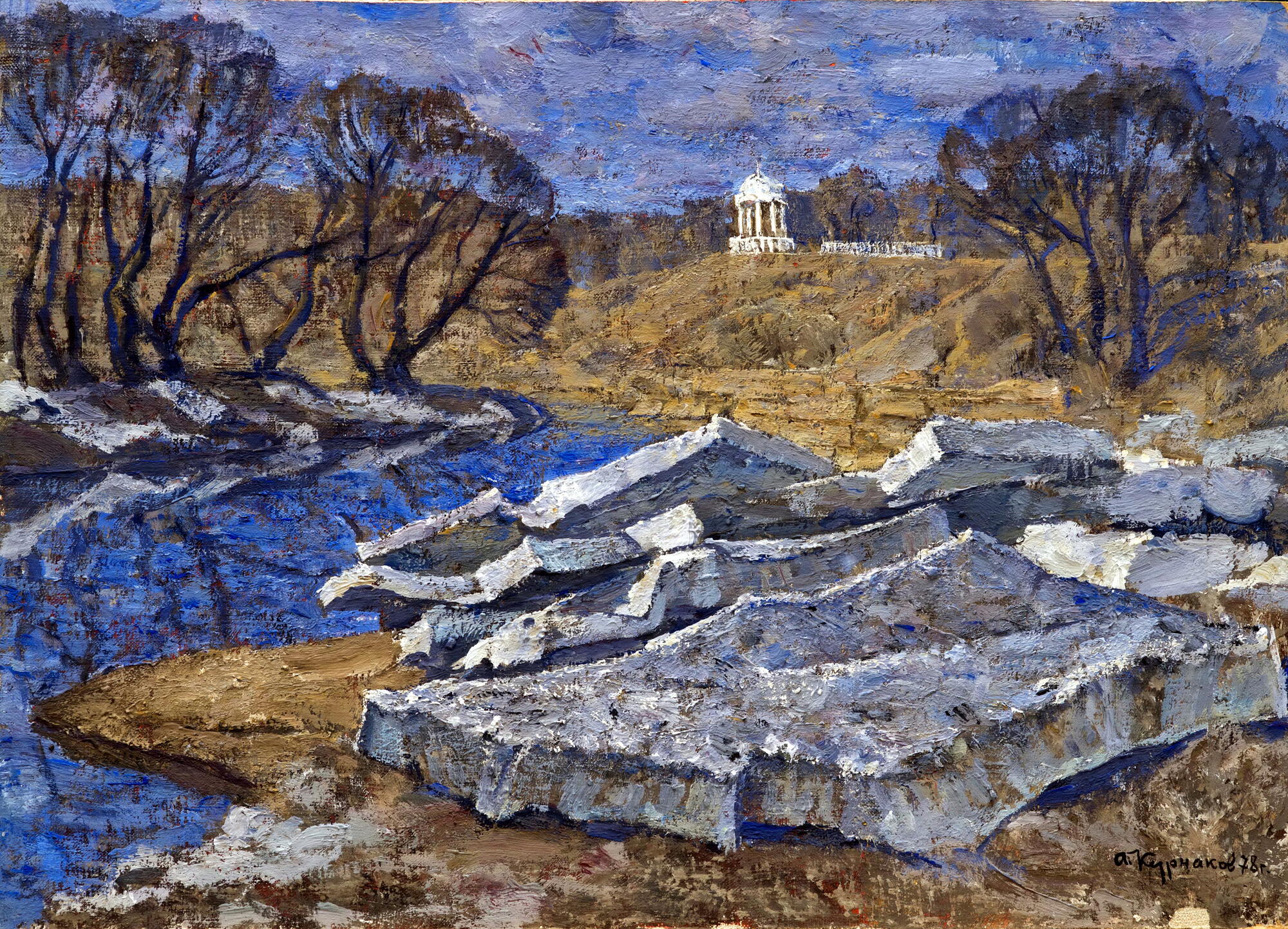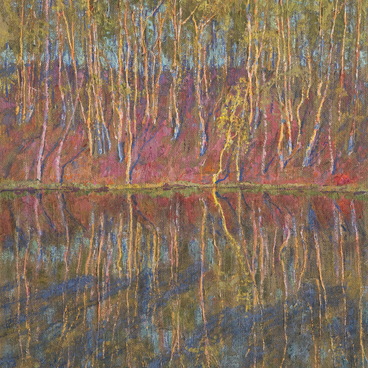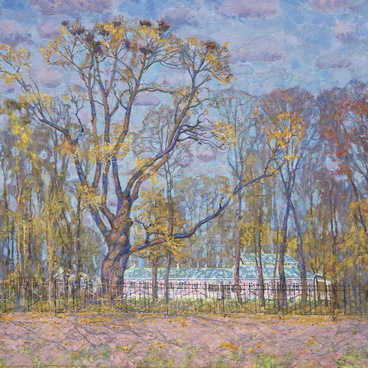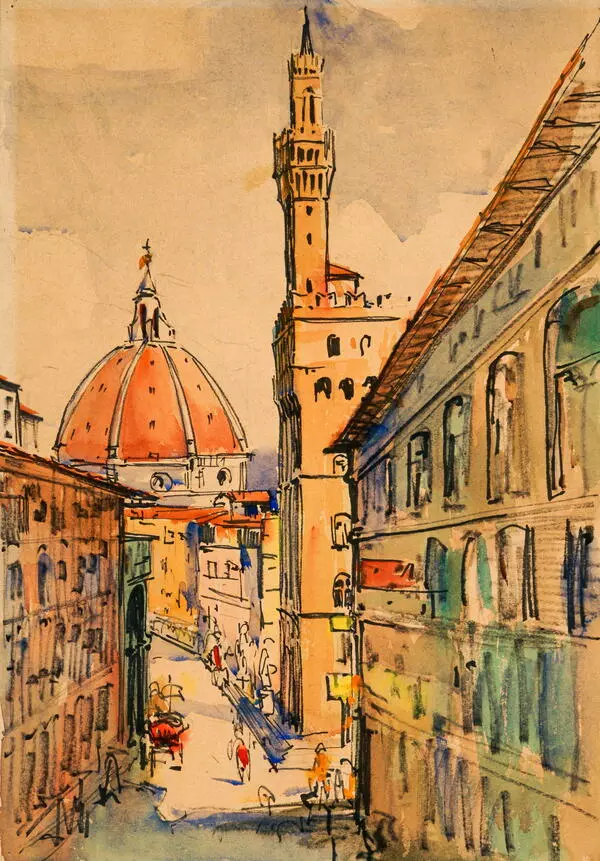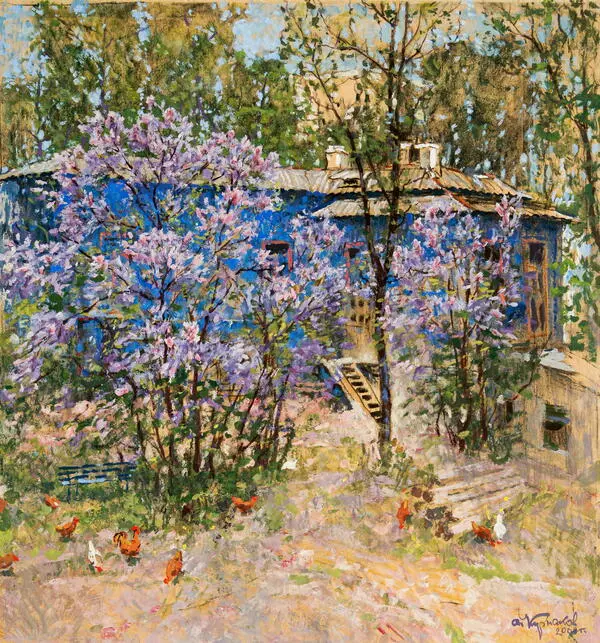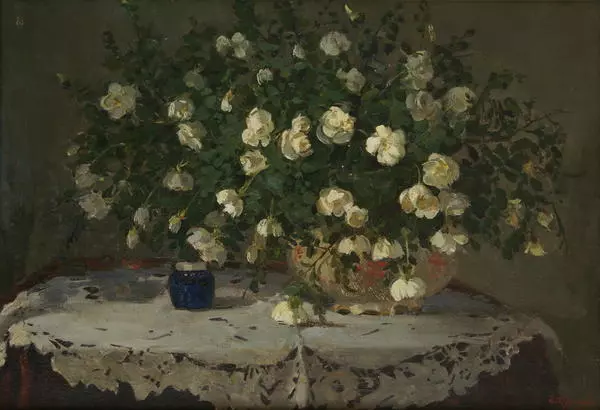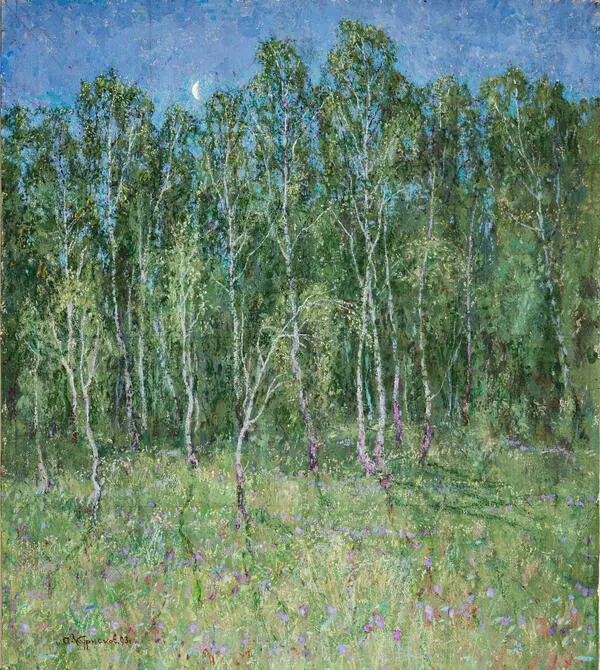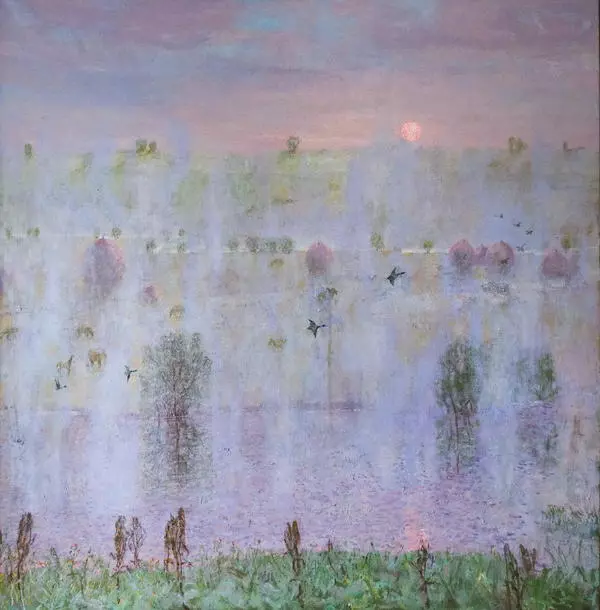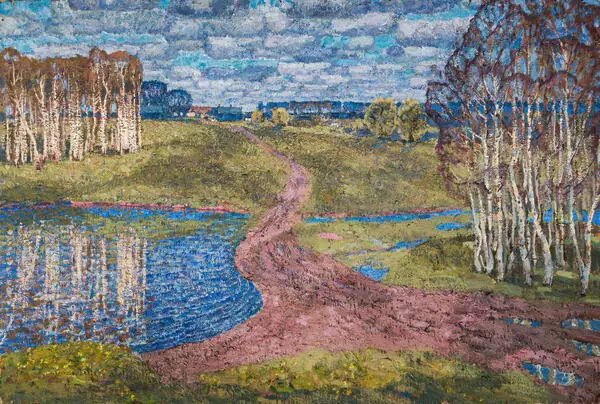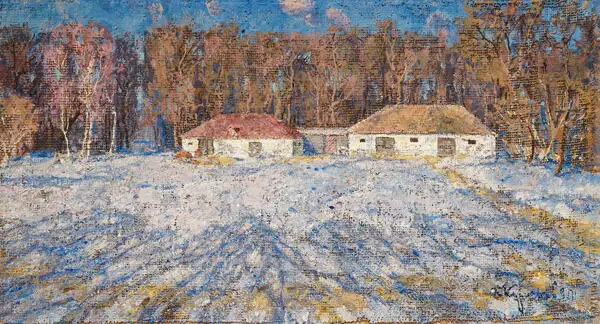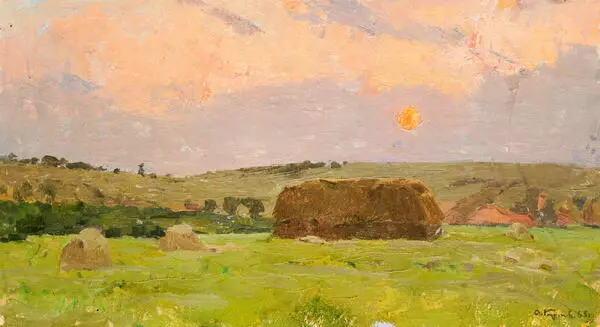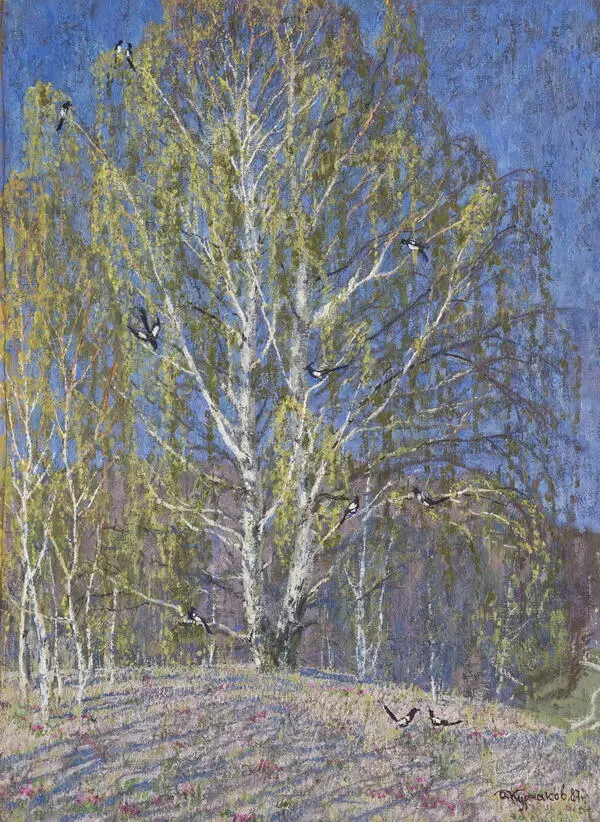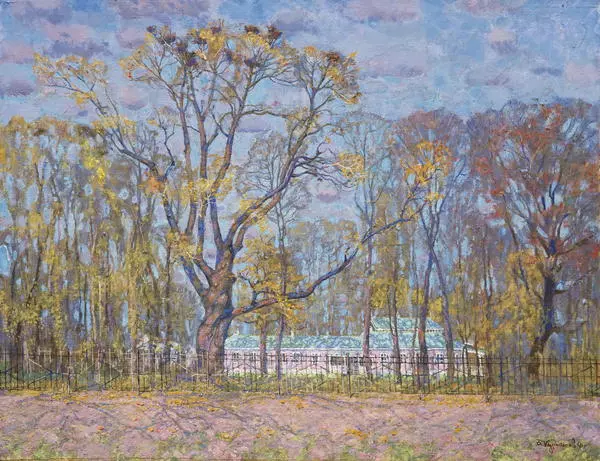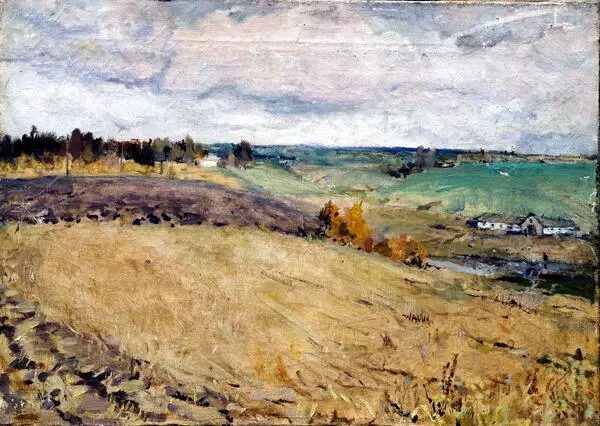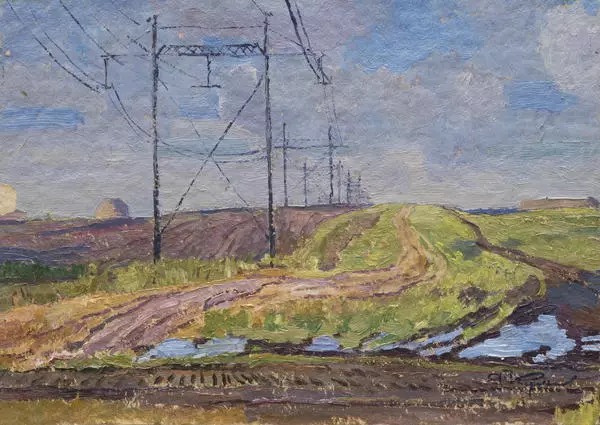In Oryol, on the left steep bank of the Orlik River, there is a park that has long been called the Nest of Gentlefolk by the townspeople. It started in the middle of the 19th century, when in 1859 the novel by Ivan Sergeevich Turgenev ‘The Nest of Gentlefolk’ was first published in the Sovremennik magazine. Oryol’s citizens immediately recognized a city estate and a two-story wooden mansion of the first half of the 19th century, in which Evdokia Semyonovna Karatneva lived (the alleged prototype of Liza Kalitina) as “Kalitin”s house”. This place immediately became extremely popular, it is mentioned in the works of Nikolai Leskov, Ivan Bunin, Konstantin Balmont.
Nowadays people come here for walks, newlyweds lay flowers at the bust of Ivan Turgenev, music concerts have been held here since the end of the 19th century, various exhibitions and festivities are held.
In April 1903, before the twentieth anniversary of Ivan Turgenev’s death, the local Fine Arts Society rented from the owner of the estate V.K. Hermut a garden to open public entertainments, and then raise a bust of a favorite writer. On May 2, 1903, a message appeared on the pages of the ‘Oryol Messenger’: ‘The Oryol Fine Arts Society, expanding its activities, decided to open its own garden, concentrating children”s games in it, the absence of which was a big gap in Oryol’s life. We note with pleasure that this decision is currently being implemented by the said company. The society rented Mrs. Germut’s garden, located on the Verkhne-Dvoryanskaya and the Orlik River Embankment and known as “The Nest of Gentlefolk " after the novel by I.S. Turgenev…’
This place was much loved by Andrei Ilyich Kurnakov, who depicted it repeatedly. There are summer and winter landscapes in his collection.
We see the very beginning of spring: the floating of ice ended, and the river is free from its chains, but giant ice floes stuck on the flat right bank. They hulk up, creep one on top of the other, stand on an edge. Mighty, dirty clods are the reminder of the past frosty winter, the snow on them has not yet melted. This is the foreground of the picture; it is painted in large, wide, rough strokes.
And in the background, in the center, spring is already running the things. The steep coast is illuminated by the sun, it is bright, joyful, painted in ocher tones. Above it is a blue sky with pinkish-gray cumulus, beloved by the artist. The river is transparent from the sky’s blueness, the riverside trees are reflected in it. There is a thinly painted white airy rotunda and a balustrade that encloses the steep bank. The trees of the park, marked by a common reddish mass, are in the distance.
The warm sun and the breath of a fresh, still cool breeze are both present in the landscape. The artist was attracted by this confrontation of natural elements: mighty blocks of ice thrown ashore by such a small, meek river like the shallow Orlik are the remnants of a severe winter, and the warmth of the thawed earth on the slope, the blue sky and water - the coming of spring, its flawless victory.
Nowadays people come here for walks, newlyweds lay flowers at the bust of Ivan Turgenev, music concerts have been held here since the end of the 19th century, various exhibitions and festivities are held.
In April 1903, before the twentieth anniversary of Ivan Turgenev’s death, the local Fine Arts Society rented from the owner of the estate V.K. Hermut a garden to open public entertainments, and then raise a bust of a favorite writer. On May 2, 1903, a message appeared on the pages of the ‘Oryol Messenger’: ‘The Oryol Fine Arts Society, expanding its activities, decided to open its own garden, concentrating children”s games in it, the absence of which was a big gap in Oryol’s life. We note with pleasure that this decision is currently being implemented by the said company. The society rented Mrs. Germut’s garden, located on the Verkhne-Dvoryanskaya and the Orlik River Embankment and known as “The Nest of Gentlefolk " after the novel by I.S. Turgenev…’
This place was much loved by Andrei Ilyich Kurnakov, who depicted it repeatedly. There are summer and winter landscapes in his collection.
We see the very beginning of spring: the floating of ice ended, and the river is free from its chains, but giant ice floes stuck on the flat right bank. They hulk up, creep one on top of the other, stand on an edge. Mighty, dirty clods are the reminder of the past frosty winter, the snow on them has not yet melted. This is the foreground of the picture; it is painted in large, wide, rough strokes.
And in the background, in the center, spring is already running the things. The steep coast is illuminated by the sun, it is bright, joyful, painted in ocher tones. Above it is a blue sky with pinkish-gray cumulus, beloved by the artist. The river is transparent from the sky’s blueness, the riverside trees are reflected in it. There is a thinly painted white airy rotunda and a balustrade that encloses the steep bank. The trees of the park, marked by a common reddish mass, are in the distance.
The warm sun and the breath of a fresh, still cool breeze are both present in the landscape. The artist was attracted by this confrontation of natural elements: mighty blocks of ice thrown ashore by such a small, meek river like the shallow Orlik are the remnants of a severe winter, and the warmth of the thawed earth on the slope, the blue sky and water - the coming of spring, its flawless victory.
